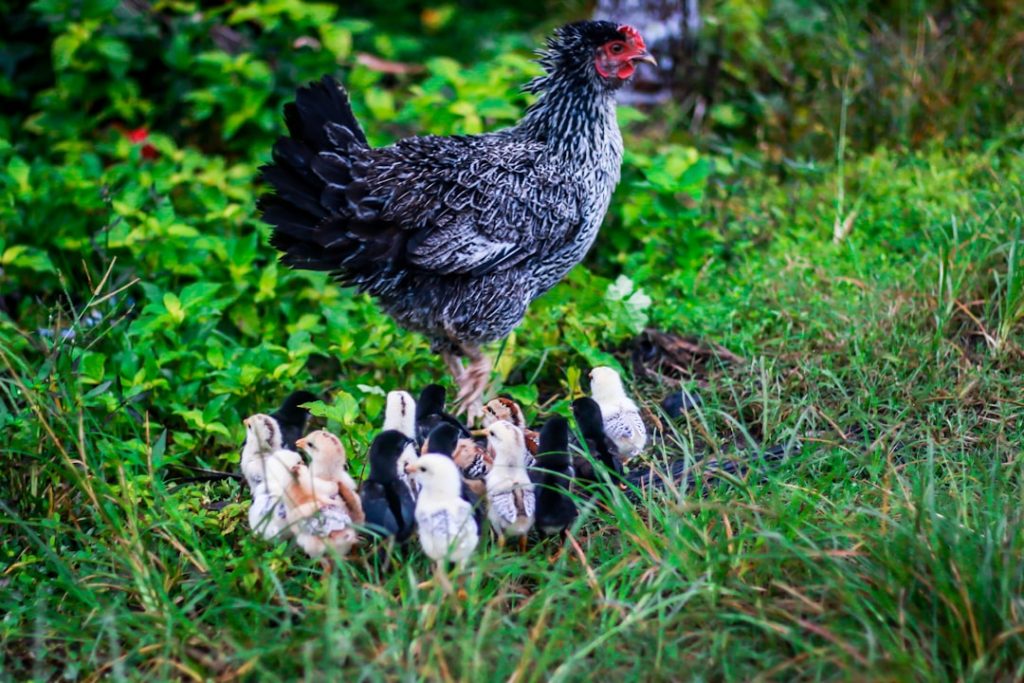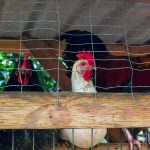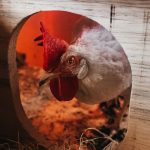Chickens accessing lamb creep feeders pose significant challenges for sheep farmers. This intrusion can contaminate lamb feed, potentially causing health issues for the lambs. Moreover, chickens may consume substantial amounts of feed, reducing nutrition available for lambs and increasing feed costs for farmers.
Understanding chicken behavior and their attraction to lamb feeders is essential for developing effective solutions. Chickens are naturally inquisitive and opportunistic feeders, often exploring new food sources. They are particularly drawn to the aroma and texture of lamb feed, making these feeders attractive targets.
Simply removing chickens from feeders is not a sustainable solution, as they are likely to return if the underlying causes of their attraction are not addressed. The presence of chickens in lamb creep feeders can also increase competition for feed between lambs and chickens. This competition may result in reduced growth rates for lambs and potential health issues due to inadequate nutrition.
Furthermore, chickens in the feeders can cause stress for lambs, as they may feel threatened or intimidated by the presence of other animals in their feeding area. Prompt action is necessary to ensure the health and well-being of lambs and to minimize potential economic losses for farmers.
Table of Contents
- 1 Creating physical barriers to prevent chicken access
- 2 Implementing deterrents to discourage chicken presence
- 3 Establishing separate feeding areas for chickens and lambs
- 4 Utilizing feed additives to make the feed unappealing to chickens
- 5 Regular maintenance and monitoring of the lamb creep feeders
- 6 Seeking professional advice for persistent chicken intrusion issues
- 7 FAQs
- 7.1 What is a lamb creep feeder?
- 7.2 Why is it important to keep chickens out of lamb creep feeders?
- 7.3 How can chickens be kept out of lamb creep feeders?
- 7.4 Are there any natural methods to keep chickens out of lamb creep feeders?
- 7.5 What are the potential consequences of chickens accessing lamb creep feeders?
Key Takeaways
- Chickens accessing lamb creep feeders can lead to feed wastage and potential health issues for the lambs.
- Physical barriers such as wire mesh or covers can be installed to prevent chickens from accessing the lamb creep feeders.
- Deterrents like scarecrows or noise-making devices can be used to discourage chickens from approaching the feeders.
- Creating separate feeding areas for chickens and lambs can help minimize competition and prevent chicken intrusion.
- Feed additives such as bittering agents can be used to make the feed unappealing to chickens and deter them from consuming it.
- Regular maintenance and monitoring of the lamb creep feeders is essential to ensure they remain secure and chicken-free.
- Seeking professional advice, such as consulting with a veterinarian or agricultural expert, can be beneficial for addressing persistent chicken intrusion issues.
Creating physical barriers to prevent chicken access
Physical Barriers
One effective way to prevent chickens from accessing lamb creep feeders is to create physical barriers that restrict their entry. This can be achieved by installing wire mesh or netting around the feeders to create an enclosure that only allows access for the lambs. The mesh or netting should be securely fastened to prevent any gaps or openings that chickens could exploit to gain entry.
Specialized Feeders and Layout Considerations
Additionally, it is important to ensure that the barriers are tall enough to prevent chickens from flying over them and accessing the feeders from above. Another option is to use specially designed feeders with narrow openings that only allow access for the lambs while preventing entry for chickens. These feeders are designed to accommodate the size and feeding behavior of lambs while excluding other animals such as chickens. In addition to physical barriers, it is important to consider the layout and placement of the lamb creep feeders to minimize opportunities for chicken access.
Regular Inspection and Maintenance
Placing the feeders in areas that are less accessible to chickens, such as enclosed pens or areas with limited chicken activity, can help reduce the likelihood of intrusion. It is also important to regularly inspect the barriers and repair any damage or wear to ensure their effectiveness in preventing chicken access.
By creating physical barriers and carefully considering the placement of lamb creep feeders, farmers can effectively minimize the risk of chicken intrusion and protect the quality and availability of feed for their lambs.
Implementing deterrents to discourage chicken presence
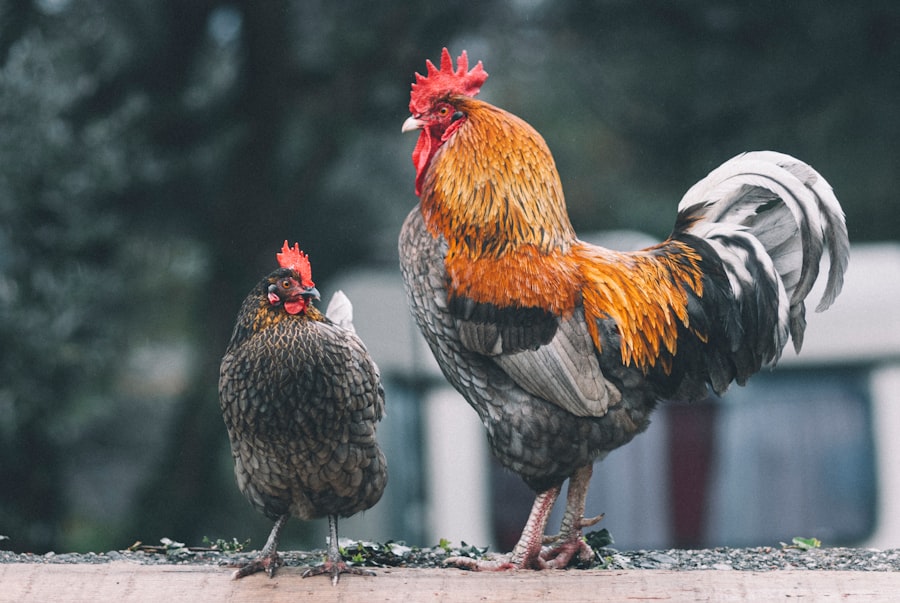
In addition to physical barriers, implementing deterrents can be an effective strategy to discourage chicken presence around lamb creep feeders. One common deterrent is the use of visual deterrents such as scarecrows or reflective objects that can startle and deter chickens from approaching the feeders. These visual deterrents should be strategically placed around the feeders to create a perceived threat for the chickens and discourage them from attempting to access the feed.
Another option is to use sound deterrents such as motion-activated devices that emit loud noises or predator calls when chickens approach the feeders. These sound deterrents can startle and intimidate chickens, making them less likely to linger around the feeders. Another effective deterrent is the use of taste aversions or repellents that make the lamb feed unappealing to chickens.
This can be achieved by incorporating natural or commercial repellents into the feed that create a taste or odor that is unpleasant for chickens. These repellents can help deter chickens from consuming the feed and discourage their presence around the feeders. It is important to carefully follow recommended guidelines for using repellents and ensure that they do not have any adverse effects on the health or behavior of the lambs.
By implementing a combination of visual deterrents, sound deterrents, and taste aversions, farmers can effectively discourage chicken presence around lamb creep feeders and protect the quality and availability of feed for their lambs.
Establishing separate feeding areas for chickens and lambs
To minimize competition for feed and reduce the likelihood of chicken intrusion, establishing separate feeding areas for chickens and lambs can be an effective solution. This can be achieved by designating specific feeding areas for each species and ensuring that they are physically separated to prevent overlap. For example, providing separate feeding stations for chickens and lambs in different areas of the farm can help minimize competition and reduce the risk of chicken intrusion into lamb creep feeders.
It is important to ensure that each feeding area is designed to accommodate the specific feeding behaviors and needs of each species, such as providing elevated feeding stations for chickens and ground-level feeders for lambs. In addition to physical separation, it is important to consider the timing and scheduling of feeding activities for chickens and lambs to further minimize competition for feed. This can be achieved by establishing specific feeding times for each species and ensuring that they do not coincide, reducing opportunities for conflict and competition.
By establishing separate feeding areas and implementing coordinated feeding schedules, farmers can effectively minimize competition for feed between chickens and lambs and reduce the likelihood of chicken intrusion into lamb creep feeders.
Utilizing feed additives to make the feed unappealing to chickens
Another effective strategy to deter chicken presence in lamb creep feeders is to utilize feed additives that make the feed unappealing to chickens. This can be achieved by incorporating natural or commercial additives into the lamb feed that create a taste or odor that is unpleasant for chickens. These additives can help deter chickens from consuming the feed and discourage their presence around the feeders.
It is important to carefully follow recommended guidelines for using feed additives and ensure that they do not have any adverse effects on the health or behavior of the lambs. In addition to taste aversions, utilizing nutritional supplements in the lamb feed that are specifically designed to meet the dietary needs of lambs while being unappealing or unsuitable for chickens can help minimize competition for feed and reduce the likelihood of chicken intrusion. By carefully selecting and incorporating appropriate feed additives and nutritional supplements into lamb creep feeders, farmers can effectively deter chicken presence and protect the quality and availability of feed for their lambs.
Regular maintenance and monitoring of the lamb creep feeders
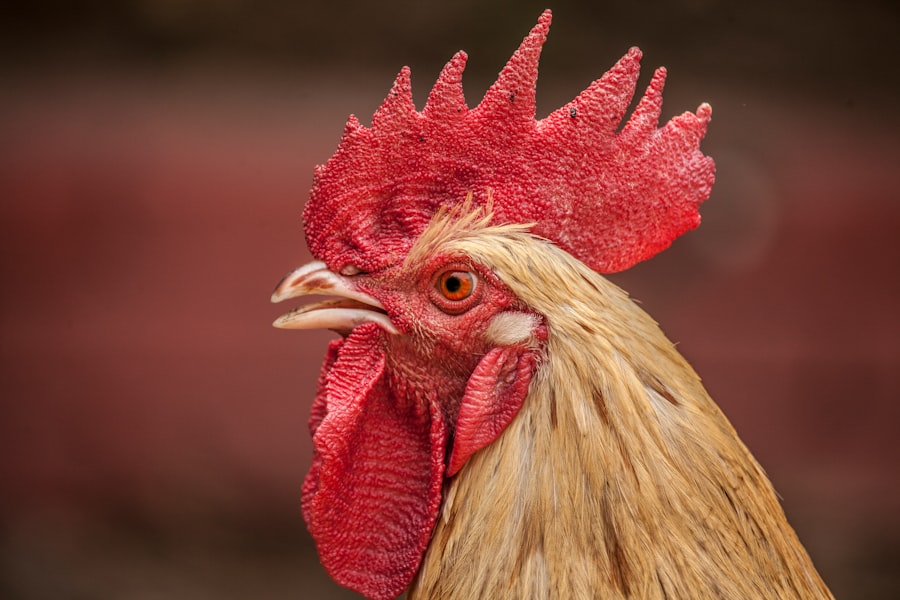
Inspecting and Repairing Physical Barriers
This includes inspecting and repairing any damage or wear to physical barriers, such as wire mesh or netting, to prevent gaps or openings that could allow chicken access.
Cleaning and Sanitizing Feeders
It also involves regularly cleaning and sanitizing the feeders to remove any spilled or contaminated feed that may attract chickens.
Monitoring Chicken Activity and Adjusting Deterrent Strategies
Additionally, monitoring the condition of lamb creep feeders and addressing any issues promptly can help prevent potential opportunities for chicken intrusion. In addition to physical maintenance, it is important to monitor chicken activity around lamb creep feeders and adjust deterrent strategies as needed. This may involve observing chicken behavior, identifying any patterns or trends in their activity, and making necessary adjustments to physical barriers or deterrents based on these observations.
By regularly maintaining and monitoring lamb creep feeders, farmers can effectively prevent chicken intrusion and ensure that they continue to provide quality nutrition for their lambs.
Seeking professional advice for persistent chicken intrusion issues
In cases where persistent chicken intrusion issues are encountered despite implementing various strategies, seeking professional advice from agricultural experts or animal behavior specialists can be beneficial. These professionals can provide valuable insights into chicken behavior and offer tailored recommendations for addressing specific challenges related to chicken intrusion in lamb creep feeders. They may also provide guidance on alternative strategies or technologies that can effectively deter chicken presence while ensuring optimal nutrition for lambs.
Professional advice may also involve conducting a thorough assessment of farm practices, infrastructure, and environmental factors that may contribute to chicken intrusion issues. This may include evaluating factors such as farm layout, housing conditions, flock management practices, and potential sources of attraction for chickens around lamb creep feeders. By seeking professional advice and expertise, farmers can gain valuable knowledge and support in addressing persistent chicken intrusion issues and implementing effective long-term solutions.
In conclusion, addressing chicken intrusion in lamb creep feeders requires a comprehensive approach that considers various strategies such as physical barriers, deterrents, separate feeding areas, feed additives, regular maintenance, monitoring, and seeking professional advice when needed. By understanding the behavior of chickens, implementing effective solutions, and maintaining proactive management practices, farmers can effectively minimize competition for feed between chickens and lambs while ensuring optimal nutrition for their livestock.
If you’re looking for more tips on keeping chickens away from your lamb creep feeders, check out this article on The Chicken Coop Country Diner. It offers insights on how to design a chicken coop that keeps your flock happy and well-fed while minimizing their access to other areas of your farm.
FAQs
What is a lamb creep feeder?
A lamb creep feeder is a specialized feeding area designed to allow lambs to access feed while preventing larger animals, such as adult sheep or chickens, from entering.
Why is it important to keep chickens out of lamb creep feeders?
Chickens can contaminate the lamb feed with droppings and potentially introduce diseases. Additionally, chickens consuming the lamb feed can lead to increased feed costs and potential health issues for the chickens.
How can chickens be kept out of lamb creep feeders?
There are several methods to keep chickens out of lamb creep feeders, including using physical barriers such as mesh or wire to prevent access, placing the feeder in an area inaccessible to chickens, or using deterrents such as motion-activated devices or repellents.
Are there any natural methods to keep chickens out of lamb creep feeders?
Some natural methods to deter chickens from accessing lamb creep feeders include using strong-smelling herbs or spices, such as garlic or cayenne pepper, around the feeder, or introducing predator decoys, such as fake owls or hawks, to scare off the chickens.
What are the potential consequences of chickens accessing lamb creep feeders?
If chickens are able to access lamb creep feeders, it can lead to increased feed costs, potential health issues for the chickens, and contamination of the lamb feed with droppings and potential diseases.
Meet Walter, the feathered-friend fanatic of Florida! Nestled in the sunshine state, Walter struts through life with his feathered companions, clucking his way to happiness. With a coop that’s fancier than a five-star hotel, he’s the Don Juan of the chicken world. When he’s not teaching his hens to do the cha-cha, you’ll find him in a heated debate with his prized rooster, Sir Clucks-a-Lot. Walter’s poultry passion is no yolk; he’s the sunny-side-up guy you never knew you needed in your flock of friends!

